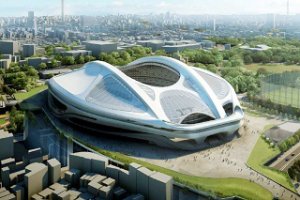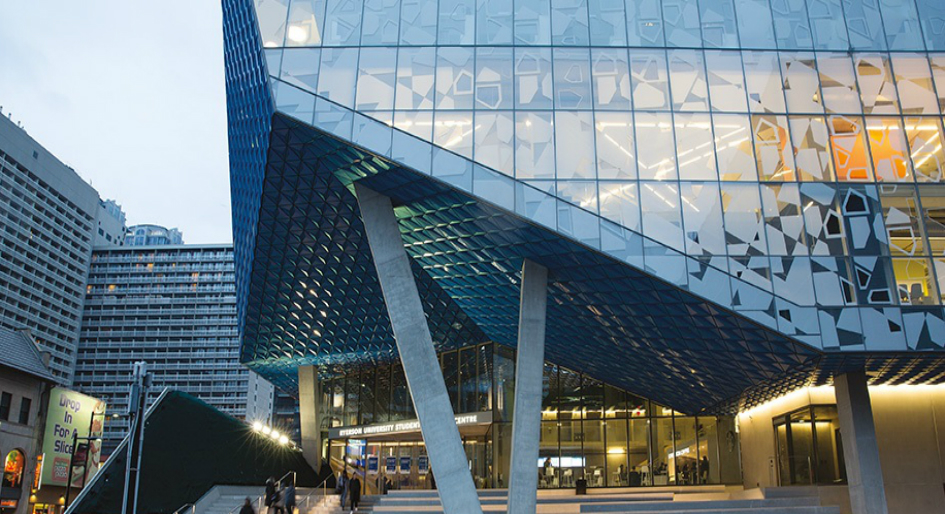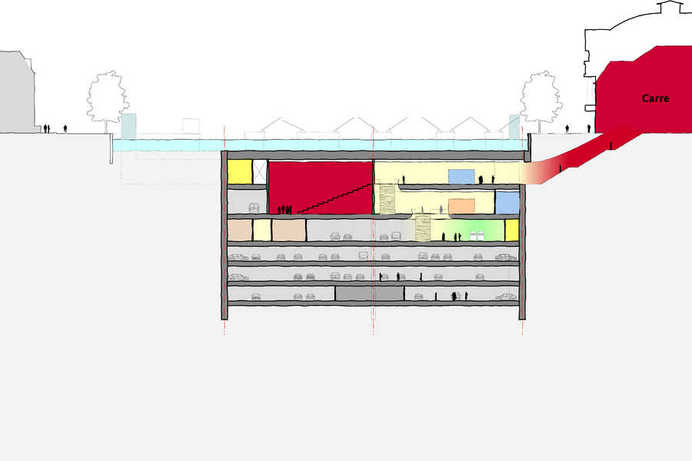From Guest Blogger Lana Hawkins: Seven Mega-Construction Projects That Could Save the Environment and the Economy

Tokyo Olympic Stadium
Japan is hosting the 2020 Olympics and seems determined to demonstrate its commitment to the global environmental cause. The Olympic Stadium in Tokyo is as futuristic as its gets, both in terms of appearance and the way it functions. It incorporates geothermal energy runs a rainwater cooling systems and reuses greywater, a component that often gets overlooked in green projects, which is a shame since it does not require treating as sewage.
Image source: inhabitat.com
The Transformable Antarctic Research Facility
Also, know as an Ice Palace, this extraordinary project shows that buildings can fit unobtrusively into their environment. Namely, the facility blends seamlessly with the timeless, perma-ice landscape. Its shape mimics the contours of ice shards and cliffs and features huge steel tentacles. What is more, Ice Palace provides proper environmental conditions and shelter, adapting to harsh weather, varying temperatures, and frosty surroundings.
Masdar City
Burgeoning Abu Dhabi is working on what will become the world’s first carbon-neutral city. The gas-powered cars will be banished from the area in favor of their solar counterparts. Northeast-facing buildings will be used to provide shade and reduce air conditioning needs. The plan is to recycle as much as 80% of all water and to recycle human waste. Of course, one of the main goals of Masdar City is to decrease the dependency on fossil fuels and propel the whole region towards a more sustainable future.
Image source: reminetwork.com
Bird-Friendly Buildings
Skyscrapers are not exactly the embodiment of environmental friendliness, but that could change soon. Cities like San Francisco have recognized that numerous birds get killed in collisions with these buildings. Now, they prescribe the use of opaque window coverings and glass that is less reflective. Of course, this is just one example of the new age construction practice. Contractors will have to walk an extra mile and also embrace solutions that suppliers like TDK formwork offer.
The Desert Aquanet
A matrix of artificial connected lakes in the middle of a desert may sound like a science fiction concept, but it is actually a real project championed by Shimizu Corporation. Each seawater lake will have an artificial island in its center, where farming and construction will take place. The lakes would naturally cool the air above islands and thus make the area arable and livable to humans. The project is so humongous that it is expected to have a potential impact on global weather patterns.
Image source: dspncdn.com
AMFORA
Amsterdam could become the first metropolis to have a whole underwater city built beneath it. The lead architect claims that the AMFORA project is not only feasible but also a necessity in this day and age, when our concrete jungles are becoming more and more overcrowded and polluted. Besides, the drilling will not disturb the existing street traffic nor cause construction noise. It also helps that Amsterdam sit on a 30-meter layer of clay, which is waterproof and can be utilized as a material for walls of the new subterranean realm.
Coral Venice
Last, but not the least, we come across the Coral Venice project. It is unique for its use of chemically-engineered building materials such as synthetic limestone reefs. They are actually created from protocells, that move and react like living organisms. The goal is to assemble a series of buildings that will be able to grow, repair themselves, and adapt to environmental pressures. Hence, Coral Venice could finally teach us how to fully connect the man-made and natural world.
Green Titans
Amidst all the traffic jams, factory fumes, and destruction of the natural habitat, new paragons of sustainability rise. They are beacons of hope that we will be able to leave a better world to future generations. Not only that: These constructions are a way to tap into renewable resources and boost the faltering economy. Alas, we have still a lot of ground to cover before we can be sure that the seeds of change that we plant today will bear fruit tomorrow.



